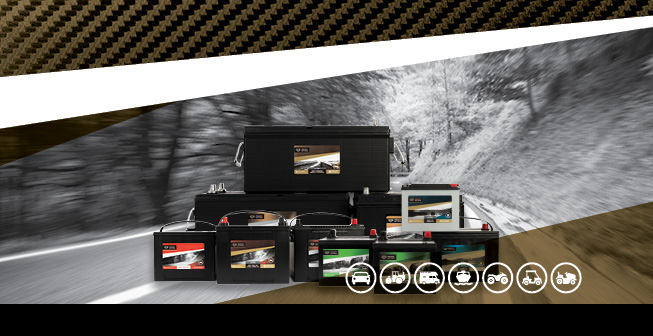Not all batteries are created equal. When the success of your operation depends on the reliability of your equipment, you need to ensure you’re using a good-quality battery that’s well maintained.

“A quality battery gives hours and hours of dependable service, which is especially important when you have tight windows to get crops sown, grown and harvested,” said John Benton with East Penn Canada, the manufacturing partner of Co-op Premium Batteries. “During the growing season, you can’t afford downtime from premature battery failure.”
Co-op Premium Batteries have been designed and fortified to deliver reliable power in harsh operating environments typical of commercial and agriculture applications, including dust and dirt, extreme vibration and large temperature swings. High-impact polypropylene cases reduce breakage and the premium quality components deliver maximum power-per-pound of battery.
But just like oil and tires, even good batteries require maintenance. To get the most out of your battery, Benton recommends creating an in-season and off-season strategy for maintenance.
In-Season Maintenance
Throughout the growing season, inspect your battery regularly as part of routine equipment maintenance.
“You want to do a visual check, looking for any potential damage, cracks or bulges,” he said. “Examine the posts for loose connections or signs of corrosion, which may prevent the battery from accepting a full charge.”
To clean up corroded posts, use a wire brush and baking soda — or purchase a battery cleaner — to neutralize the acid. Make sure battery posts are snug, but don’t over-tighten. It’s also important to check acid levels if the battery is accessible and you can open the filling caps.
“If the acid level seems low, we always recommend you top up with distilled water,” Benton said, explaining there is always some dissipation from engine heat.
He continued that one dry cell may be the result of a crack or a hole in the battery case. If the entire battery is dry, there could be a problem with the charging system producing too much current.
Off-Season Maintenance
“In the old way of thinking, you would pull your battery out at the end of the season,” Benton said. “But you don’t have to physically remove them from the equipment. There are some people that just disconnect the negative post.”
Whether you remove the battery or not, you’ll want to make sure it’s clean to avoid parasitic draws that cause the battery to self-discharge more quickly. You should also check the voltage monthly and recharge the battery as required. Sitting in a partial state of charge for an extended period can damage battery plates, so they’re no longer capable of holding a full charge.
Benton explained that a fully charged flooded battery is 12.6 volts, and it’s 75 per cent charged at 12.4 volts. For AGM (absorbed glass mat) batteries used in some equipment, such as all-terrain vehicles, the battery is fully charged at 12.8 volts, and 12.6 volts indicates a 75 per cent state of charge.
“You don’t want your battery to remain below 75 per cent state of charge for any length of time. In addition to reducing capacity and harming service life, a partially discharged battery could potentially freeze in cold weather,” he warned. “A battery that’s been frozen is no longer reliable and will need to be replaced.”
Once a battery drops to 75 per cent, follow a battery charger’s instructions and all safety protocols to return it to a full charge. This includes ensuring the charger is turned off before connecting to and disconnecting from the battery.
Also, make sure you’re working in a well-ventilated area as charging produces hydrogen gas, which can ignite — so don’t lean over a battery and refrain from activities that could cause a spark. Never charge a frozen battery as it may explode and cause serious injury.
Related Maintenance Details
The three tools you need for battery maintenance include a voltmeter, a battery charger and a post cleaner. A battery tester is a more advanced tool that provides insight into how your battery is working. While this may be a good investment, participating Co-op Agro Centres may also have testers on hand to support you.
Co-op Premium Batteries come with an industry-competitive warranty, with up to a three-year free replacement on selected series. Proper maintenance will ensure you’re covered by warranty in the rare instance that premature failure occurs due to manufacturer’s defect.
“Batteries require maintenance to operate at peak efficiency,” Benton noted. “Whether you do the maintenance yourself or have a trusted provider do it for you, regular maintenance will extend battery service life and help you avoid costly downtime.”

